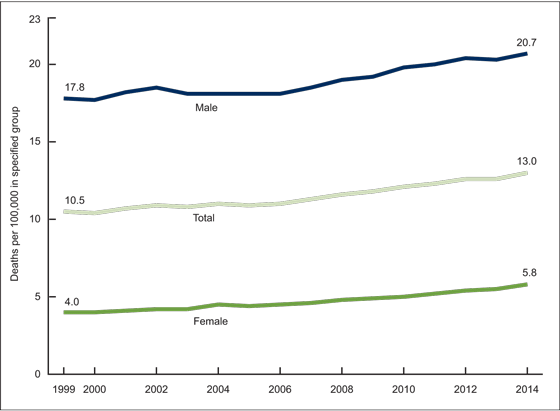Suicide Prevention: The Role of Parents

A Necessary Conversation about Suicide
The high-profile suicide deaths of Kate Spade and Anthony Bourdain opened up a national conversation about suicide. This is a scary topic for parents — one too often spoken about in whispered tones.
The facts are clear. Suicide is a serious health issue that affects our children and our schools.
The Centers for Disease Control and Prevention (CDC) reports that suicide is the 2nd leading cause of death for people ages 10 to 34.
According to the CDC’s 2015 data, 17% of students in grades 9 to 12 report having seriously considered suicide, and 8% report having attempted suicide one or more times in the past 12 months. As always, these averages conceal significant differences. Suicides are more common for male students than for female students, though surveys indicate that girls consider it at a higher rate than boys do. Youth suicide rates are lower in California than in the US as a whole.

What can parents do?
We can learn to recognize and respond to the warning signs of suicide, not only in our children and teens, but in our friends and our children’s friends, too.
Look and listen for any of these warning signs:
- Talking about suicide or death
- Giving away possessions or putting affairs in order
- Reckless behavior, increased drug or alcohol use
- Statements or feelings of hopelessness, no sense of purpose
- Withdrawal or sudden mood changes.
If you see signs that your child or someone you know might be depressed or thinking about suicide, take them seriously.
It might be hard, but try to begin a conversation. The Know the Signs website provides advice on how to get that conversation started. The National Suicide Prevention Lifeline, open 24/7, provides free and confidential support for people in distress as well as prevention and crisis resources.
Ask if they are considering suicide. Listen, express concern, reassure. Keep them safe. Remove access to the means to carry out a suicide. Be prepared with information on how to get help.
If you have a child or friend you are concerned about, let them know that they are not alone and that help is just a call away.
- Call the National Suicide Prevention Lifeline anytime at 1-800-273-8255.
- Text “help” to the Crisis Text Line at 741-741.
If you feel the situation is critical, take the person to a nearby emergency room or walk-in psychiatric crisis clinic or call 9-1-1.
Action Steps for Parents at School
What does your child’s school do to help students who are experiencing mental health issues? Do you know what resources are available?
California school boards are required to have a suicide prevention policy for schools grade 7 through 12. This policy must look at the needs of high-risk students and provide suicide awareness and prevention training for teachers. Is this happening in your district?
- Make sure your school board has adopted a policy and that it is being carried out.
- Ask what training your school staff are receiving and what resources are available to students who are at risk of suicide.
Get your PTA involved. Work with your principal to create a community meeting to share the district policy and discuss how this is implemented at your school. Take a look at the Comprehensive Suicide Prevention Toolkit for Schools to see how other school districts have addressed this issue.
Support Your Child to Reduce the Risk of Suicide
There are many strategies to reduce the risk of suicide and increase resilience and coping skills. Here are some suggestions:
- Help children establish strong family and community connections.
- Limit time on social media.
- Help children form friendships
- Encourage children to develop interests they can explore to build competency.
- Teach children that it is OK to fail. That is how we learn.
There is a lot of work to do in our schools and communities to remove the stigma surrounding mental health. Let’s support our children and help them support one another so that those experiencing mental health issues are not embarrassed or afraid to seek help.
 Shereen Walter is Vice President of Health and Community Concerns for the California State PTA.
Shereen Walter is Vice President of Health and Community Concerns for the California State PTA. Tags on this post
Health SuicideAll Tags
A-G requirements Absences Accountability Accreditation Achievement gap Administrators After school Algebra API Arts Assessment At-risk students Attendance Beacon links Bilingual education Bonds Brain Brown Act Budgets Bullying Burbank Business Career Carol Dweck Categorical funds Catholic schools Certification CHAMP Change Character Education Chart Charter schools Civics Class size CMOs Collective bargaining College Common core Community schools Contest Continuous Improvement Cost of education Counselors Creativity Crossword CSBA CTA Dashboard Data Dialogue District boundaries Districts Diversity Drawing DREAM Act Dyslexia EACH Early childhood Economic growth EdPrezi EdSource EdTech Education foundations Effort Election English learners Equity ESSA Ethnic studies Ethnic studies Evaluation rubric Expanded Learning Facilities Fake News Federal Federal policy Funding Gifted Graduation rates Grit Health Help Wanted History Home schools Homeless students Homework Hours of opportunity Humanities Independence Day Indignation Infrastructure Initiatives International Jargon Khan Academy Kindergarten LCAP LCFF Leaderboard Leadership Learning Litigation Lobbyists Local control Local funding Local governance Lottery Magnet schools Map Math Media Mental Health Mindfulness Mindset Myth Myths NAEP National comparisons NCLB Nutrition Pandemic Parcel taxes Parent Engagement Parent Leader Guide Parents peanut butter Pedagogy Pensions personalized Philanthropy PISA Planning Policy Politics population Poverty Preschool Prezi Private schools Prize Project-based learning Prop 13 Prop 98 Property taxes PTA Purpose of education puzzle Quality Race Rating Schools Reading Recruiting teachers Reform Religious education Religious schools Research Retaining teachers Rigor School board School choice School Climate School Closures Science Serrano vs Priest Sex Ed Site Map Sleep Social-emotional learning Song Special ed Spending SPSA Standards Strike STRS Student motivation Student voice Success Suicide Summer Superintendent Suspensions Talent Teacher pay Teacher shortage Teachers Technology Technology in education Template Test scores Tests Time in school Time on task Trump Undocumented Unions Universal education Vaccination Values Vaping Video Volunteering Volunteers Vote Vouchers Winners Year in ReviewSharing is caring!
Password Reset
Search all lesson and blog content here.
Login with Email
We will send your Login Link to your email
address. Click on the link and you will be
logged into Ed100. No more passwords to
remember!















Questions & Comments
To comment or reply, please sign in .
Jeff Camp - Founder November 25, 2019 at 1:24 pm
Marilyn Lucey June 19, 2018 at 2:12 pm